This article will cover:
I'll start this article by covering neutral areas in your TF2 maps as i feel this is often the weakest aspect of TF2 custom maps. In particular use of the “industrial” content. I have a bit of an impartiality to the industrial content as it's so simple and easy to execute it gets used in almost all circumstances now (turbine, as an official example), which breaks certain consistencies regarding the TF2 narrative. Partly i feel this is a result of the abundance of neutral industrial content on offer which is too easy to fall back on if people are having trouble executing neutral scenes with other textures. I'll go ahead and demonstrate exactly which textures i am on about:
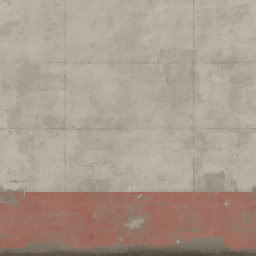
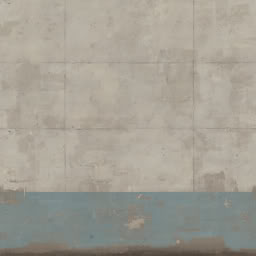
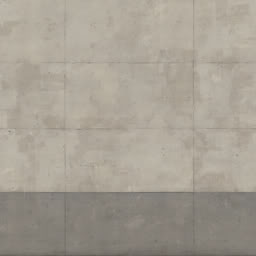
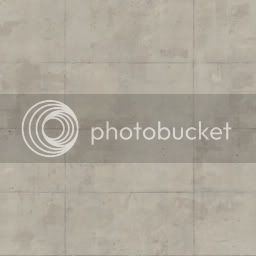
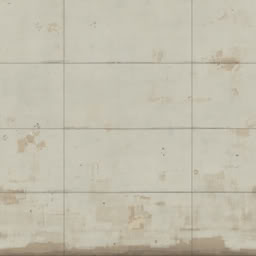
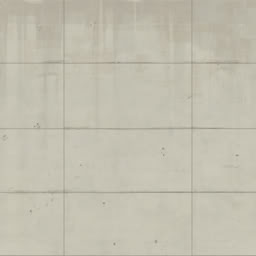
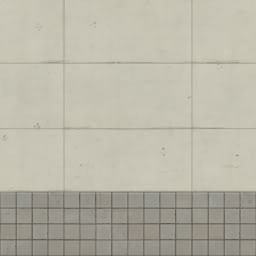
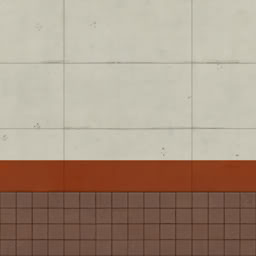
Façades are important to CTF based maps; they are required for narrative consistency and immersion. The intelligence is kept in an otherwise inconspicuous base. Or, for invade mode, some intelligence or procurable resource has wound up between two bases and can be used to either sabotage the enemy or be useful for your teams resources in some other manner. This can be implied through your maps aesthetics and game mode set up.
CTF and symmetrical maps: No-mans land and material neutrality.
I think one of the problems mappers are having is what to bridge between two contrasting bases that doesn't suggest that the no-mans land is owned by any particular team. Generally metal suggests BLU and wood suggests RED so people like to use concrete (IE industrial) materials as a solution to neutrality, largely as a result of their abundance and ease of execution. But you need to look at it from another perspective as the material represented implies team X to a certain extent, but not as much as colour does (quite literally representing RED and BLU(e)). Additionally, material implies different story contexts beyond territory ownership. Some people like to argue that dustbowl fails façade consistency in respects to the use of metal at its finale, which supposedly represents BLU. However the metal is in fact tinted red (with help from suggestions of rust), red implemented into the texture in an effort for team and base recognition consistency in the map. Each team is not limited by the implication of certain materials suggesting X team and this is an important fact to realise when creating neutral areas and unique base façade designs. It is not unreasonable for BLU to utilise wood, and nor RED to utilise metal or concrete. Though it does depend on the context of the maps theme and execution.
2Fort's bridge is made of wood, it even has a red roof, but it does not imply any territorial ownership for team RED. Despite the red roof, the bridge is white and the central area allows certain assumptions on the part of the player (such as to ignore the presence of a red roof in a neutral area) allowing them to conclude the area is fundamentally neutral. But neutrality needs to be implied and suggested on some level for players to accept it, an entirely red wood bridge would too strongly suggest territory control by the RED team and potentially even confuse players. White wood (white textures in general) is an excellent material/colour for suggesting neutral areas between two base façades. Lumberyard demonstrates this as an arena map which revolves around a central neutral objective. It is also consistent socially as industrial materials (concrete) implies important and useful structures; structures that have had resources and time put into their erection as dedicated structures to serve important tasks. It is inconsistent then, for there to be neutral industrial buildings between two base façades. This is the success of 2fort and the failure of turbine.
The façade aspect of the TF2 narrative dictates resources and intelligence to be hidden and protected by base façades and for neutral areas to merely serve as unimportant go-betweens. Given the era and location of TF2 (generally assumed to be America) it is unreasonable to design neutral, uncontrolled areas with concrete structures, especially when base façades represent more innocent run down structures. The two teams, particularly in CTF, hide behind façades that hide more insidious truths. The façades hide the presence of technology and use of industrial buildings in or on the neutral area does not compliment this part of the TF2 narrative as one assumes both teams are trying to keep valuable content secret and industrial buildings would be rather conspicuous to the opposing team. The façade is a smoke screen by one team for the benefit of the other's complacency. Neutral industrial content is largely a result of hydro's multi faceted objective system. It's a unique circumstance where the objective is effectively neutral despite its multiple rounds and arenas. Use of the industrial theme outside of this context is merely down to a lack of imagination on the part of the author.
In summary, using industrial textures in neutral areas or on the front of bases does not accurately follow the TF2 narrative. For the sakes of immersing players in the narrative in CTF maps one needs to execute an effective façade. Let me give you an example of how façades, neutral areas, industrial areas and spytech should be implemented to follow through with TF2's narrative.
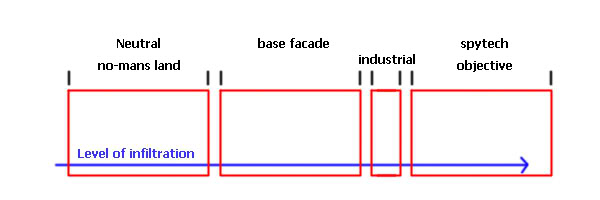
CTF Base Façades.
To create an effective façade one should (but not required to) choose a theme that is innocent. It is less important for a CTF map theme to be based off of the usual resource type themes as the mechanics and objective system is different to the other more popular modes like A/D (that do require this consideration). The objective is the intelligence not a facility or other static resource/device. To this end, we create a façade to house/hide our procurable objective. No-mans land should be inconspicuous with no industrial buildings if they are not strictly warranted given the theme in relation to reality (hydro), an otherwise innocent façade that leads into spytech that can be housed in industrial themed structures hidden beyond the façade.
As illustrated by the above image we can see clearly the stages players pass through to access the procurable objective. On exiting their base they cross a neutral piece of land unclaimed by either team. This land should not house any buildings or objects of apparent significance/importance; such as what concrete industrial buildings would imply (as is accepted in TC mode). But shacks, barns, canals, old vehicles are all good choices in which to break up sight lines or theme your neutral area.
Players must enter and infiltrate the façade in order to access the secret base and procure the objective. The façade will generally be an ambiguous facility, perhaps a lose parts storage facility or farm etc. The choice is up to your imagination but should utilise run down materials and content that make it look old and unimportant. Beyond this one utilises the industrial components to indicate the outside of the important facility being hidden by X team.
I will display several examples if my rambling have failed in effectively defining what i am describing.
Neutral: No-mans land
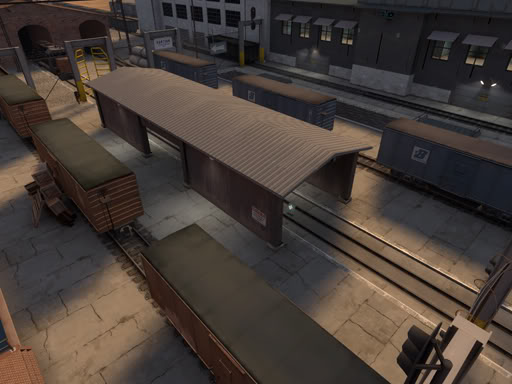
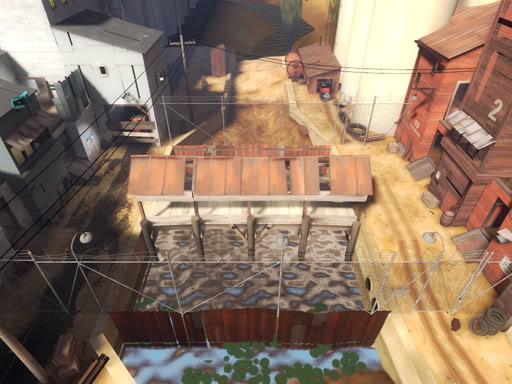
Façade: The smoke screen.
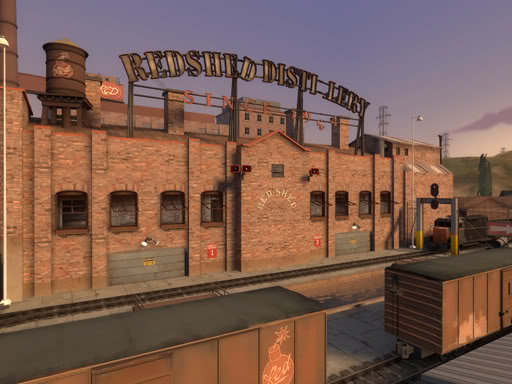
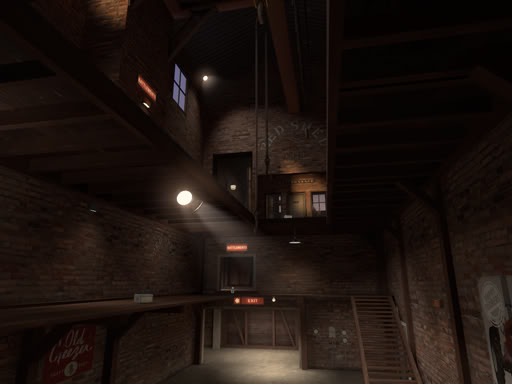
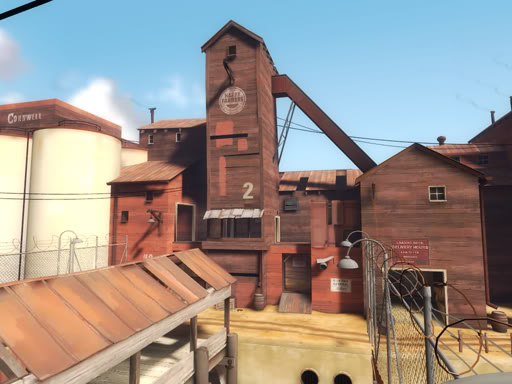
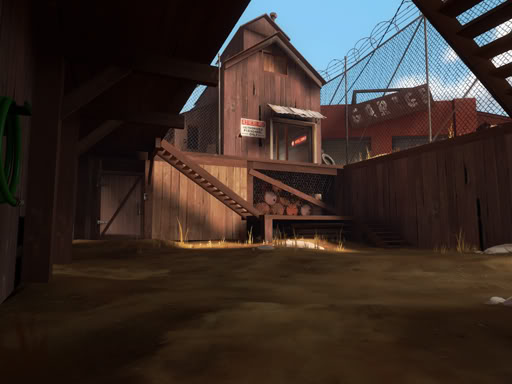
Spytech:
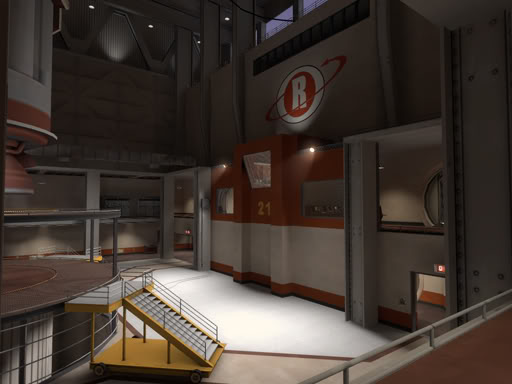
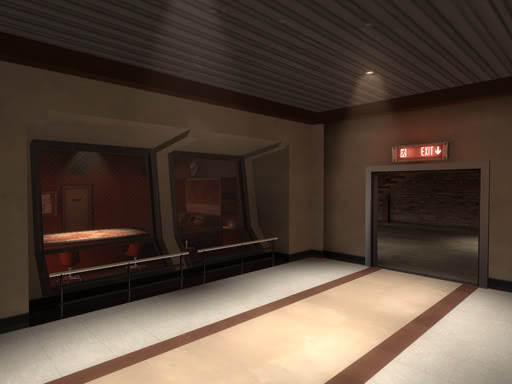
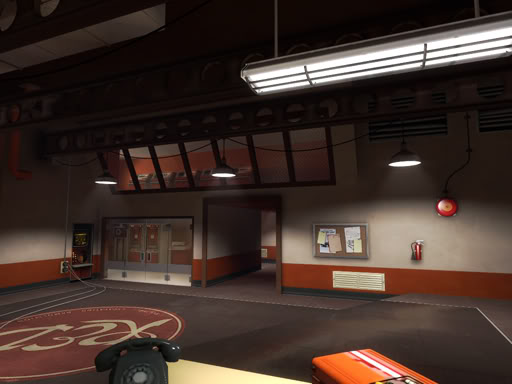
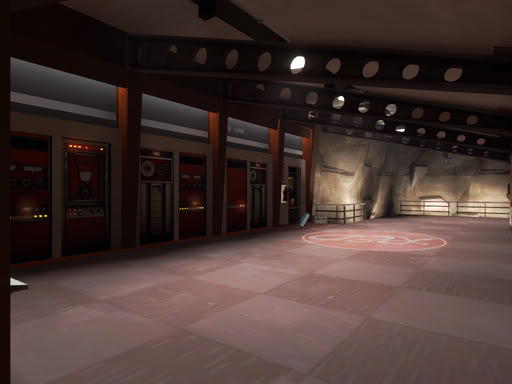
It is at least my opinion (due to the lack of industrial content in official CTF maps) that if the industrial content were to be executed in a CTF map it would be such that it would be the visual divider between cover operation and the spytech that lay beyond, if there was a courtyard that didn't cause the facade to immediately transition into spytech area (as 2fort is underground and Well's spytech base is hidden behind an already massive structure). Under the same principle guidelines, due to the symmetrical nature of most 5cp "push" maps, this guide also applies to 5cp maps. A central neutral area followed by a facade-cover operation and spytech within or beyond the facade.
A cross sections shows it like this:
CTF_2fort
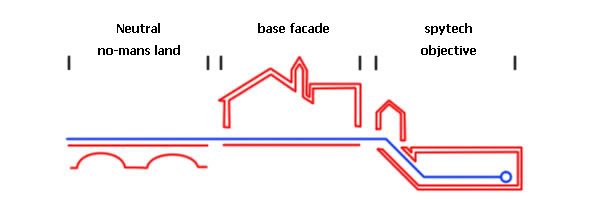
Because 2fort's secret base is underground there is no oppotunity to apply an outter shell for the spytech structure.
CTF_Well
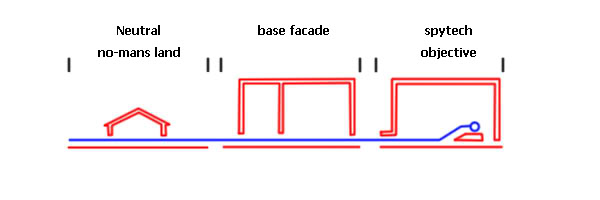
Well is a conversion of a converted port (ctf>cp>ctf). The central area has been modified to suit TF2 ctf play, from its previous TF2 cp root. The facade-cover operation was implemented on such a scale that it hides what lies beyond rather effectively. The spytech is introduced immediately after the cover operation meaning that there is no courtyard that warrants any execution of the industrial theme as the the outter shell of the structure is not visible to players.
Personal example: CTF_Sabotage
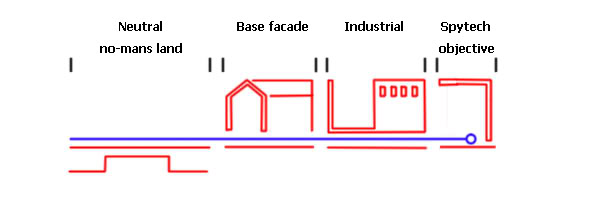
This is just how I would implement the industrial theme in a ctf and/or cp mode TF2 maps. There are many circumstances where the industrial theme is not warranted and can be ignored, but sometimes map authors dispense of the cover operations altogether producing massive industrial themed bases that contrast to the TF2 narrative. In an effort to set a more realistic trend in ctf mode maps, and partly as a response to ctf_turbine's failure to meet the TF2 narrative in this regard, i created ctf_sabotage. The facade opens up into a courtyard after players infiltrate the cover operation facade, beyond which lies concrete industrial buildings that contain spy tech gear and house the objective.
Why this guide exists:
From an immersion point of view, turbine fails the TF2 narrative by not providing the appropriate façade and perhaps concentrating too much on the abstract idea of 2 bases existing opposite each other. The same flaw will exist in the majority of maps that rely on industrial textures to create their neutral areas (and even bases). “It looks really cool” is not an acceptable excuse for breaking the TF2 narrative if you really care to apply this amount of depth for game consistency in your map.
So, why is it important to execute your CTF map under these thematic guidelines. Progression is one answer; having these elements in your map indicates a players position within the map. One determines their level of infiltration and orientation, thus the direction in which to further infiltrate/retreat through their surroundings. To this end the map will both flow and play consistently to the TF2 narrative that syncs to TF2's presence in reality; basic human psychology.
A note on A/D Façades.
The theme is typically based off an important resource. Weapons, fuel, food, transport and communications are probably the main 5. Once chosen, you can begin to shape your aesthetics to meet the needs of replicating X type of facility.
When applying 3 stages it is easier to break up progression, whilst single stage A/D can be a little trickier in applying hints of progression to players. But it can be defined as such: sparse huts and out house storage sheds, into more solid structures that probably handle raw materials and equipment, then onto more developed and permanent structures (made out of metal and concrete as opposed to wood) that are likely used for refining or the later stages of resource X's life. Be it a firing mechanism for weapons, distillery for fuel, depot for food etc.
When all is said and done:
Of course, these are just my observations as an individual and Valve have proven their tolerance of artistic license through a number of the officialised custom maps. Each map approaches TF2 level design from a dissimilar perspective, with differing levels of accuracy regarding TF2 themes and theme execution. Particularly in regards to spytech and industrial textures.
In order to help you guys with neutral scenario's within your maps here are some neutral textures to consider if building neutral structures in your maps:
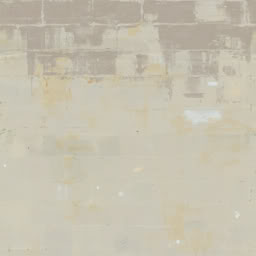
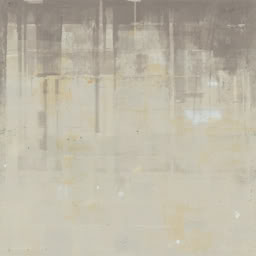
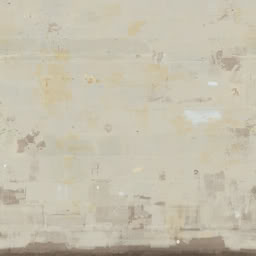
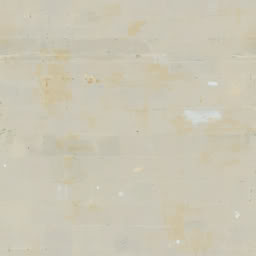
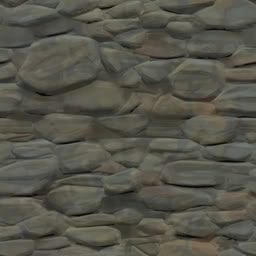
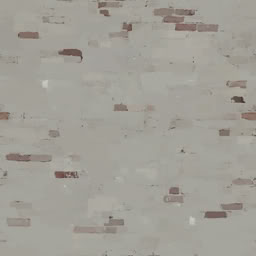
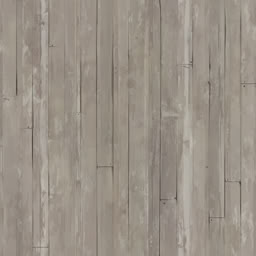

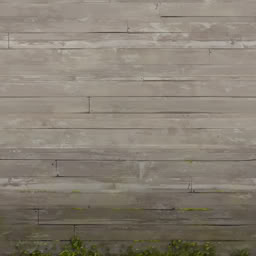
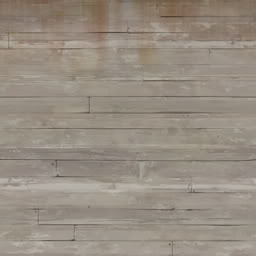
- Use of neutral content.
- Creating an effective neutral environment
- Facade reference material
- Creating your base(s) facade(s)
- Use of RED and BLU content
- Use of spytech content
- Creating your spytech base(s)
I'll start this article by covering neutral areas in your TF2 maps as i feel this is often the weakest aspect of TF2 custom maps. In particular use of the “industrial” content. I have a bit of an impartiality to the industrial content as it's so simple and easy to execute it gets used in almost all circumstances now (turbine, as an official example), which breaks certain consistencies regarding the TF2 narrative. Partly i feel this is a result of the abundance of neutral industrial content on offer which is too easy to fall back on if people are having trouble executing neutral scenes with other textures. I'll go ahead and demonstrate exactly which textures i am on about:








Façades are important to CTF based maps; they are required for narrative consistency and immersion. The intelligence is kept in an otherwise inconspicuous base. Or, for invade mode, some intelligence or procurable resource has wound up between two bases and can be used to either sabotage the enemy or be useful for your teams resources in some other manner. This can be implied through your maps aesthetics and game mode set up.
CTF and symmetrical maps: No-mans land and material neutrality.
I think one of the problems mappers are having is what to bridge between two contrasting bases that doesn't suggest that the no-mans land is owned by any particular team. Generally metal suggests BLU and wood suggests RED so people like to use concrete (IE industrial) materials as a solution to neutrality, largely as a result of their abundance and ease of execution. But you need to look at it from another perspective as the material represented implies team X to a certain extent, but not as much as colour does (quite literally representing RED and BLU(e)). Additionally, material implies different story contexts beyond territory ownership. Some people like to argue that dustbowl fails façade consistency in respects to the use of metal at its finale, which supposedly represents BLU. However the metal is in fact tinted red (with help from suggestions of rust), red implemented into the texture in an effort for team and base recognition consistency in the map. Each team is not limited by the implication of certain materials suggesting X team and this is an important fact to realise when creating neutral areas and unique base façade designs. It is not unreasonable for BLU to utilise wood, and nor RED to utilise metal or concrete. Though it does depend on the context of the maps theme and execution.
2Fort's bridge is made of wood, it even has a red roof, but it does not imply any territorial ownership for team RED. Despite the red roof, the bridge is white and the central area allows certain assumptions on the part of the player (such as to ignore the presence of a red roof in a neutral area) allowing them to conclude the area is fundamentally neutral. But neutrality needs to be implied and suggested on some level for players to accept it, an entirely red wood bridge would too strongly suggest territory control by the RED team and potentially even confuse players. White wood (white textures in general) is an excellent material/colour for suggesting neutral areas between two base façades. Lumberyard demonstrates this as an arena map which revolves around a central neutral objective. It is also consistent socially as industrial materials (concrete) implies important and useful structures; structures that have had resources and time put into their erection as dedicated structures to serve important tasks. It is inconsistent then, for there to be neutral industrial buildings between two base façades. This is the success of 2fort and the failure of turbine.
The façade aspect of the TF2 narrative dictates resources and intelligence to be hidden and protected by base façades and for neutral areas to merely serve as unimportant go-betweens. Given the era and location of TF2 (generally assumed to be America) it is unreasonable to design neutral, uncontrolled areas with concrete structures, especially when base façades represent more innocent run down structures. The two teams, particularly in CTF, hide behind façades that hide more insidious truths. The façades hide the presence of technology and use of industrial buildings in or on the neutral area does not compliment this part of the TF2 narrative as one assumes both teams are trying to keep valuable content secret and industrial buildings would be rather conspicuous to the opposing team. The façade is a smoke screen by one team for the benefit of the other's complacency. Neutral industrial content is largely a result of hydro's multi faceted objective system. It's a unique circumstance where the objective is effectively neutral despite its multiple rounds and arenas. Use of the industrial theme outside of this context is merely down to a lack of imagination on the part of the author.
In summary, using industrial textures in neutral areas or on the front of bases does not accurately follow the TF2 narrative. For the sakes of immersing players in the narrative in CTF maps one needs to execute an effective façade. Let me give you an example of how façades, neutral areas, industrial areas and spytech should be implemented to follow through with TF2's narrative.

CTF Base Façades.
To create an effective façade one should (but not required to) choose a theme that is innocent. It is less important for a CTF map theme to be based off of the usual resource type themes as the mechanics and objective system is different to the other more popular modes like A/D (that do require this consideration). The objective is the intelligence not a facility or other static resource/device. To this end, we create a façade to house/hide our procurable objective. No-mans land should be inconspicuous with no industrial buildings if they are not strictly warranted given the theme in relation to reality (hydro), an otherwise innocent façade that leads into spytech that can be housed in industrial themed structures hidden beyond the façade.
As illustrated by the above image we can see clearly the stages players pass through to access the procurable objective. On exiting their base they cross a neutral piece of land unclaimed by either team. This land should not house any buildings or objects of apparent significance/importance; such as what concrete industrial buildings would imply (as is accepted in TC mode). But shacks, barns, canals, old vehicles are all good choices in which to break up sight lines or theme your neutral area.
Players must enter and infiltrate the façade in order to access the secret base and procure the objective. The façade will generally be an ambiguous facility, perhaps a lose parts storage facility or farm etc. The choice is up to your imagination but should utilise run down materials and content that make it look old and unimportant. Beyond this one utilises the industrial components to indicate the outside of the important facility being hidden by X team.
I will display several examples if my rambling have failed in effectively defining what i am describing.
Neutral: No-mans land


Façade: The smoke screen.




Spytech:




It is at least my opinion (due to the lack of industrial content in official CTF maps) that if the industrial content were to be executed in a CTF map it would be such that it would be the visual divider between cover operation and the spytech that lay beyond, if there was a courtyard that didn't cause the facade to immediately transition into spytech area (as 2fort is underground and Well's spytech base is hidden behind an already massive structure). Under the same principle guidelines, due to the symmetrical nature of most 5cp "push" maps, this guide also applies to 5cp maps. A central neutral area followed by a facade-cover operation and spytech within or beyond the facade.
A cross sections shows it like this:
CTF_2fort

Because 2fort's secret base is underground there is no oppotunity to apply an outter shell for the spytech structure.
CTF_Well

Well is a conversion of a converted port (ctf>cp>ctf). The central area has been modified to suit TF2 ctf play, from its previous TF2 cp root. The facade-cover operation was implemented on such a scale that it hides what lies beyond rather effectively. The spytech is introduced immediately after the cover operation meaning that there is no courtyard that warrants any execution of the industrial theme as the the outter shell of the structure is not visible to players.
Personal example: CTF_Sabotage

This is just how I would implement the industrial theme in a ctf and/or cp mode TF2 maps. There are many circumstances where the industrial theme is not warranted and can be ignored, but sometimes map authors dispense of the cover operations altogether producing massive industrial themed bases that contrast to the TF2 narrative. In an effort to set a more realistic trend in ctf mode maps, and partly as a response to ctf_turbine's failure to meet the TF2 narrative in this regard, i created ctf_sabotage. The facade opens up into a courtyard after players infiltrate the cover operation facade, beyond which lies concrete industrial buildings that contain spy tech gear and house the objective.
Why this guide exists:
From an immersion point of view, turbine fails the TF2 narrative by not providing the appropriate façade and perhaps concentrating too much on the abstract idea of 2 bases existing opposite each other. The same flaw will exist in the majority of maps that rely on industrial textures to create their neutral areas (and even bases). “It looks really cool” is not an acceptable excuse for breaking the TF2 narrative if you really care to apply this amount of depth for game consistency in your map.
So, why is it important to execute your CTF map under these thematic guidelines. Progression is one answer; having these elements in your map indicates a players position within the map. One determines their level of infiltration and orientation, thus the direction in which to further infiltrate/retreat through their surroundings. To this end the map will both flow and play consistently to the TF2 narrative that syncs to TF2's presence in reality; basic human psychology.
A note on A/D Façades.
The theme is typically based off an important resource. Weapons, fuel, food, transport and communications are probably the main 5. Once chosen, you can begin to shape your aesthetics to meet the needs of replicating X type of facility.
When applying 3 stages it is easier to break up progression, whilst single stage A/D can be a little trickier in applying hints of progression to players. But it can be defined as such: sparse huts and out house storage sheds, into more solid structures that probably handle raw materials and equipment, then onto more developed and permanent structures (made out of metal and concrete as opposed to wood) that are likely used for refining or the later stages of resource X's life. Be it a firing mechanism for weapons, distillery for fuel, depot for food etc.
When all is said and done:
Of course, these are just my observations as an individual and Valve have proven their tolerance of artistic license through a number of the officialised custom maps. Each map approaches TF2 level design from a dissimilar perspective, with differing levels of accuracy regarding TF2 themes and theme execution. Particularly in regards to spytech and industrial textures.
In order to help you guys with neutral scenario's within your maps here are some neutral textures to consider if building neutral structures in your maps:










Last edited:




